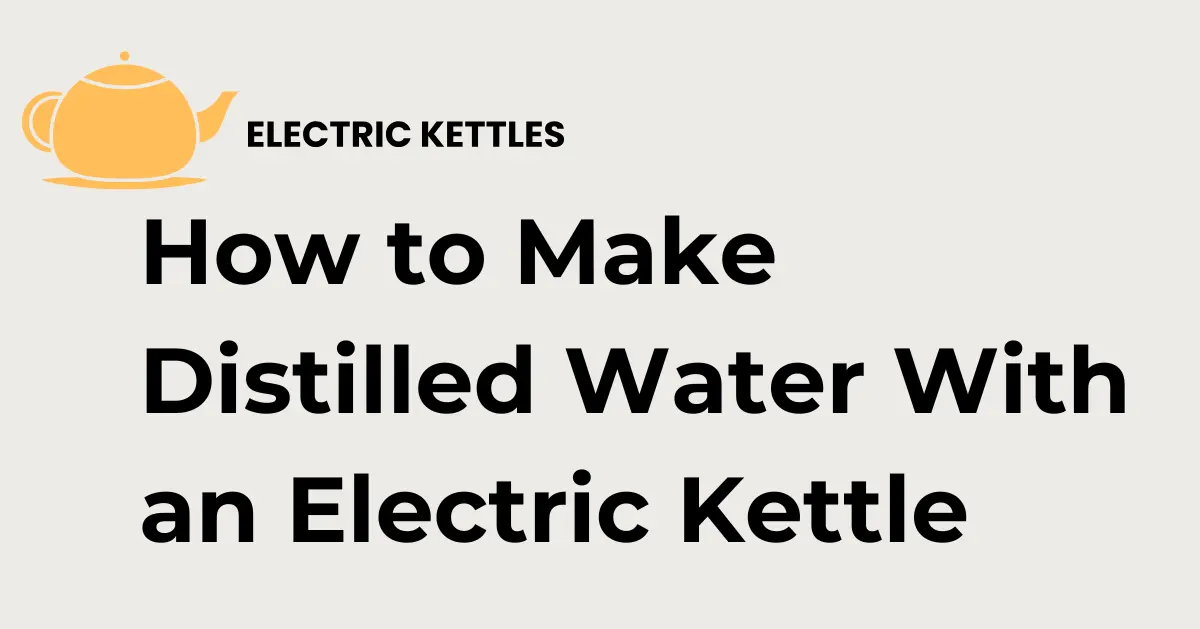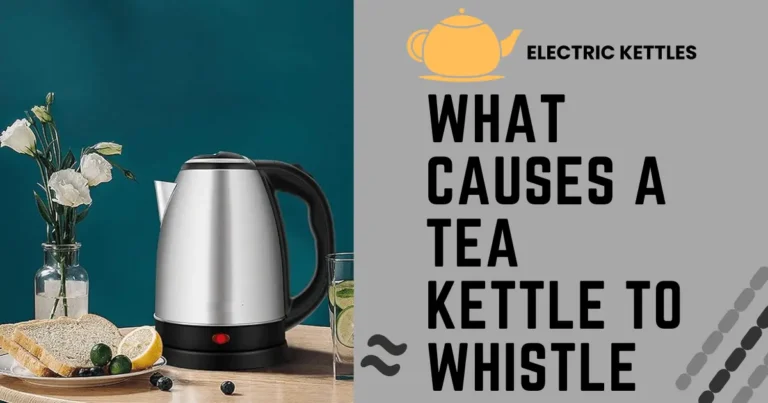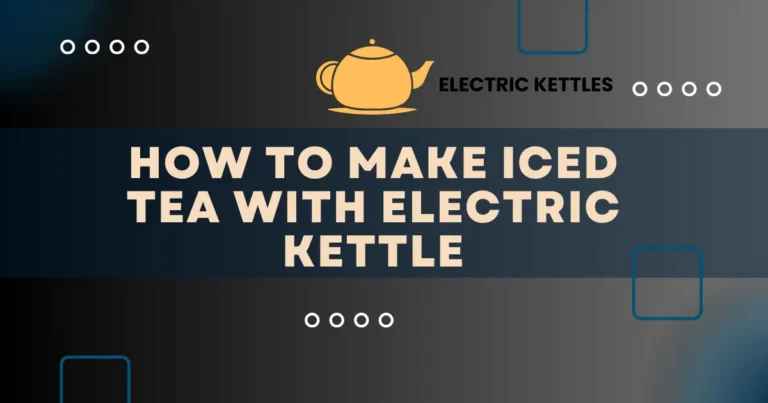How to Make Distilled Water With an Electric Kettle
Distilled water is water that has been purified by boiling and collecting the steam. This process removes impurities, minerals, and contaminants from the water. The result is clean, pure water that is free of any particles or chemicals. It is often used when a high level of purity is needed.
Common uses of distilled water include medical and laboratory settings, where clean water is essential. It is also used in car batteries, steam irons, and for cleaning sensitive equipment. Some people use distilled water for drinking, especially if they want to avoid minerals found in tap water. Distilled water is helpful in areas where water quality is poor or inconsistent.
Table of Contents
Why Make Distilled Water at Home
Making distilled water at home can be a smart choice for many reasons.
Convenience and Cost Savings
Making distilled water at home can be a smart choice for many reasons. It allows you to have a supply of clean, pure water whenever you need it. By doing it yourself, you avoid buying expensive bottled distilled water. It’s also convenient, especially if you use distilled water often for things like medical devices, cleaning, or drinking.
Control Over Water Quality
Another reason is that you control the quality. You know exactly how the water is made and that it’s free of chemicals and impurities. It’s also great for people in areas where tap water quality is unreliable. Making distilled water at home saves money, reduces plastic waste, and gives you peace of mind about the water you’re using.
Environmental Benefits
By making distilled water at home, you reduce the need for plastic bottles, helping the environment. It lowers your plastic waste and carbon footprint.
Health and Safety
Homemade distilled water ensures that you’re not exposed to harmful chemicals or minerals that can be present in tap water. This is especially important for sensitive uses like baby formula, medical equipment, or certain dietary needs.
You can also read How many times the electric kettle takes to boil.
Materials Needed to Make Distilled Water
- Electric Kettle: You will need an electric kettle to boil the water. The kettle heats the water until it becomes steam, which is a key part of the distillation process.
- Heat-Resistant Bowl: A heat-resistant bowl is used to collect the steam as it condenses back into water. This bowl will be placed inside the kettle or nearby, depending on the setup you use.
- Ice or Cold Pack: Ice or a cold pack is important to speed up the condensation process. Placing ice over the lid of the kettle helps cool the steam quickly, turning it back into water.
- Aluminum Foil or Lid: You’ll need something like aluminum foil or a lid to cover the kettle and guide the steam into the collection bowl. This prevents steam from escaping and ensures that it condenses into the bowl.
- Clean Bottle or Container: Once the distilled water is collected, you’ll need a clean bottle or container to store it. Make sure the container is sterilized to keep the water pure.
Step-by-Step Process for Making Distilled Water with an Electric Kettle
Step 1. Prepare the Setup
Start by filling your electric kettle about halfway with tap water. Place a heat-resistant bowl inside the kettle, ensuring it floats on the water without touching the kettle’s heating element at the bottom. The bowl will be used to catch the distilled water. If the bowl can’t fit inside the kettle, you can place it outside the kettle, near the spout, to collect steam. Make sure everything is positioned securely before turning on the kettle.
Step 2. Boil the Water
Turn on the electric kettle and allow the water to boil. As the water heats up, it turns into steam. The steam rises and will eventually condense back into liquid form. Boiling the water is essential for removing impurities, leaving only the pure water to be collected. Be mindful not to overfill the kettle, as you need space for the bowl and to prevent water from spilling.
Step 3. Use Ice for Condensation
Once the water starts to boil and steam rises, place ice or a cold pack on top of the lid or over the spout of the kettle. This step helps cool the steam quickly, forcing it to condense back into water droplets. The colder the surface, the faster the steam will turn into liquid. This speeds up the process and ensures more distilled water is collected.
Step 4. Collect the Distilled Water
As the steam condenses, water droplets will form and drip into the heat-resistant bowl inside or outside the kettle. Continue the process until you’ve collected the desired amount of distilled water. Once done, carefully remove the bowl and pour the collected water into a clean, sterilized container for storage. This distilled water is now free from impurities and ready for use.
Tips for Efficient Distillation
- Monitor the Temperature: Keep an eye on the kettle’s temperature to ensure it stays at a steady boil. A consistent boil helps produce steam efficiently. Avoid boiling the water too vigorously, as it can cause splashing and lead to a loss of water. If your kettle has an adjustable temperature setting, aim for a steady simmer to optimize the distillation process.
- Use High-Quality Water: Starting with good-quality tap water can improve the distillation results. If your tap water contains a lot of impurities, consider using filtered water to begin with. This reduces the amount of contaminants present and enhances the purity of the distilled water.
- Keep the Equipment Clean: Before starting the distillation process, ensure that your electric kettle, bowl, and containers are thoroughly cleaned and sterilized. Any residue or contaminants can affect the purity of the distilled water. Regular cleaning also helps maintain the kettle’s performance and prolong its lifespan.
- Seal the Setup Properly: Make sure the lid or covering you use to trap steam is sealed well. This prevents steam from escaping and maximizes the amount of distilled water collected. If using aluminum foil, ensure it fits tightly around the kettle’s lid or spout to direct steam effectively.
- Collect in Batches: If you need a larger quantity of distilled water, consider distilling in batches. This allows for better control over the process and ensures that the collected water remains pure. You can repeat the boiling and collection process multiple times until you reach your desired amount.
Conclusion
Making distilled water with an electric kettle is a simple and cost-effective process. By boiling tap water and collecting the steam, you can produce pure water for various uses. The method is easy to follow and requires only a few materials. With some practice, you can quickly create a reliable supply of distilled water at home.
Homemade distilled water is great for drinking, cleaning, and other purposes. It helps you avoid impurities found in tap water and reduces plastic waste from bottled water. By taking control of the distillation process, you ensure the quality of the water you use.







